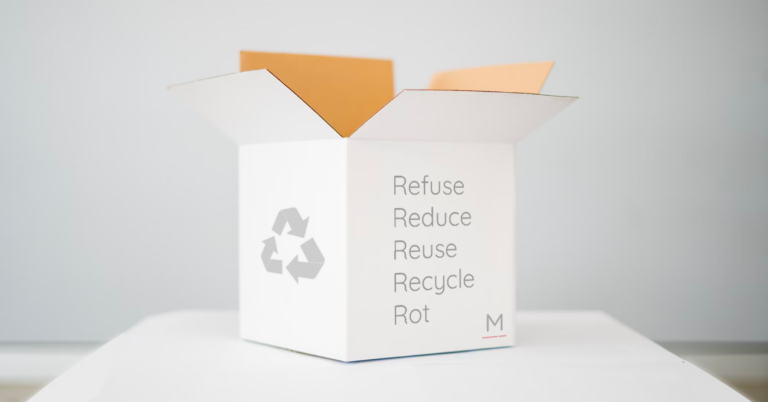In today’s world, more and more people are becoming aware of the environmental impact of their actions, including the waste they generate in their homes. One way to reduce this impact is to follow the “5 R’s” of sustainable living: Refuse, Reduce, Reuse, Recycle, and Rot. By incorporating these practices into their daily lives, homeowners can greatly reduce the amount of waste they produce and send to landfills, which not only helps the environment but also saves money and resources.
1. Refuse
The “refuse” principle of sustainable living is an important step in reducing the amount of waste that is generated in our homes. By saying “no” to products that are wasteful or harmful to the environment, we can significantly reduce our environmental impact. Homeowners can apply the “refuse” principle in a number of practical ways. For example, saying no to single-use plastics like bags, straws, utensils, and other disposable items can make a big difference. Instead, opting for reusable alternatives like cloth bags, stainless steel straws, and bamboo utensils can significantly reduce the amount of waste that ends up in landfills.
2. Reduce
The “reduce” principle of sustainable living encourages individuals to reduce the amount of waste they generate by consuming less and making more conscious choices about their purchases. This means being mindful of what you buy and how much you consume, in order to minimize your environmental impact. Here are some practical examples of how homeowners can apply the “reduce” principle:
Reduce food waste: Plan meals carefully to reduce the amount of food that goes to waste. Store food properly to extend its shelf life, and compost food scraps.
Reduce energy consumption: Use energy-efficient appliances and lighting, turn off lights and appliances when not in use, and reduce water consumption by taking shorter showers and fixing leaks.
Reduce paper waste: Opt for digital versions of bills and statements, use reusable cloth towels instead of paper towels, and print documents double-sided.
3. Reuse
The “reuse” principle of sustainable living emphasizes the importance of finding new ways to use items instead of throwing them away after a single use. Homeowners can apply this principle by finding creative ways to reuse items that they might otherwise discard, such as:
Using reusable water bottles, coffee cups, and shopping bags instead of single-use plastic versions.
Repurposing old furniture or household items to give them new life.
Donating unwanted clothing and household items to charities or thrift stores.
Using refillable containers for cleaning supplies and personal care products instead of buying new ones.
Repairing broken items instead of replacing them.
By reusing items, homeowners can reduce the amount of waste they generate and save money in the process. Reusing items is a simple but effective way to promote sustainability and reduce our environmental impact.
`
4. Recycle
The “recycle” principle of sustainable living involves transforming waste into new products, making it an essential step in reducing waste and conserving natural resources. Homeowners can easily participate by sorting recyclable materials into separate containers, checking local recycling guidelines, rinsing out containers before recycling, and being aware of what cannot be recycled. By following these simple steps, homeowners can help reduce contamination and ensure materials are recycled properly, promoting sustainability and reducing their environmental impact.
5. Rot
The “rot” principle of sustainable living involves composting organic waste such as food scraps, yard trimmings, and other biodegradable materials. Homeowners can participate in this process by setting up a compost bin or pile in their backyard or using a composting service. Composting not only helps divert waste from landfills, but it also produces nutrient-rich soil that can be used for gardening and landscaping. Homeowners can add items such as fruit and vegetable scraps, eggshells, coffee grounds, leaves, and grass clippings to their compost pile, but should avoid adding meat, dairy, and other animal products. By following these simple steps, homeowners can help reduce waste and promote sustainability by turning organic waste into a valuable resource
.
Final Thoughts
Creating a zero waste home is a simple but powerful way to show our love and respect for our planet. By implementing the 5 R’s of sustainable living, we can take practical steps to reduce our environmental impact and keep our planet cleaner. Homeowners can choose to refuse single-use plastics and unnecessary items, reduce their consumption of resources and energy, reuse items whenever possible, recycle properly and effectively, and compost organic waste to create nutrient-rich soil for gardening.


